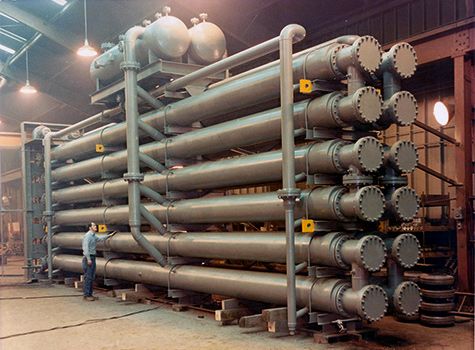The three most common uses of a scraped surface heat exchange are dewaxing, pilot testing, viscous liquid cool. Systems are highly versatile for a wide range of jobs. Below, we want to take some time to go over the differences between the three applications of a scraped surface heat exchanger.

Armstrong Heaters. Armstrong’s vertical bayonet design and direct electric vaporizers provide an on-demand supply of ammonia vapor for specific applications.
Dewaxing: the technique is used for dewaxing lubricating oil. In these applications, wax has the same point ranges as bulk lubricating oil. The bulk lubricating oil does have a might higher freezing point, which makes crystallization a very effective way to separate the two. We are often involved in the process design for the dewaxing.
Viscous Cooling: a scraped surface heat exchanger a highly effective at cooling highly viscous fluids. As fluids cool on inner pipe walls, the viscosity will increase, which creates a static boundary layer that reduces heat transfer. Our exchangers significantly reduce thermal resistance on cold walls by disrupting and reducing the wall boundary layer. This exposes the wall to warmer fluids.
Pilot Testing: we proudly offer a pilot testing program that is used to determine if crystallization is best for separation in your application. Pilot testing provides a detailed process evaluation, which we always carry out before capital is spent on the scaling process.
Pilots, ranging in size from 6 to 12” NPS are available for rentals. Most have a type 316 stainless steel inner piper, but some pilots have carbon steel throughout.
SCRAPED SURFACE HEAT EXCHANGERS
For more information on our scraped surface heat exchangers, you should not hesitate to give our team a call.
